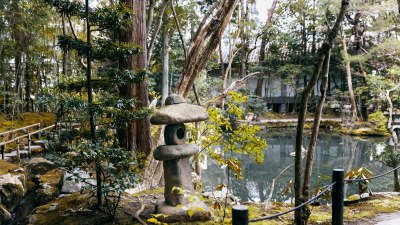Why You Should Try a ‘Silent’ Trip With No Talking for 24 Hours
Traveling in silence might sound strange, but it can completely change the way you experience a destination—and yourself.

This image was created with the assistance of DALL·E
Travel is often about connection—meeting people, sharing stories, and soaking in the sounds of a new place. But what happens when you take words out of the equation? A silent trip, where you go 24 hours without speaking, forces you to engage with your surroundings in a completely different way. It’s not just a challenge; it’s an experience that can shift your entire perspective on travel.
It Forces You to Pay Attention
When you’re not filling every moment with conversation, you start noticing details you might otherwise overlook. The distant hum of a city waking up, the way the wind moves through trees, the rhythm of people going about their day—these things become clearer when you’re silent. Without the distraction of words, you become a better observer, and the destination feels more alive.
Even in familiar places, silence changes how you experience them. A coffee shop isn’t just a stop for caffeine—it’s an orchestra of sounds, from the clinking of cups to the murmur of conversations you’re not a part of. You’re still engaged, just in a different way.
You Become More Mindful
Silence makes you slow down. Without the pressure to comment on everything or plan your next sentence, you become more present. Meals taste better when you’re focused on the flavors instead of chatting. Walks feel richer when you’re absorbing your surroundings instead of discussing what’s next.
It’s a reset for your mind. Instead of reacting to everything immediately, you sit with your thoughts. You process things differently. The constant mental noise quiets down, and travel feels less rushed and more intentional.
It Changes the Way You Interact with Others
One of the biggest surprises of a silent trip is how much you can communicate without words. Gestures, facial expressions, and body language become your tools. You start appreciating non-verbal cues and realize how much can be understood without speaking.
In some cultures, silence is more natural than in others. In Japan, quiet moments are often seen as respectful. In Buddhist monasteries, silence is a form of meditation. A silent trip can help you connect with local customs in a way that words sometimes can’t.
It Makes Everyday Tasks an Adventure
Simple things like ordering food, asking for directions, or buying a train ticket suddenly become more creative when you can’t use words. You rely on pointing, nodding, and the kindness of strangers. It can be frustrating at first, but it also makes for some of the most memorable moments of your trip.
People respond differently when you’re silent. Some become more curious, some more helpful. It shifts the way interactions happen and makes you see communication in a whole new light.
It’s a Break from Constant Noise
In daily life, we’re bombarded with words—texts, emails, social media, conversations. A silent trip is like hitting the mute button on all of it. You don’t realize how much energy goes into constant talking and reacting until you take a step back.
Even if you’re traveling with someone, taking a 24-hour silence challenge together can be surprisingly refreshing. It removes small talk and lets you just experience the world side by side.
The Verdict: Silence Can Be a Game-Changer
A silent trip isn’t about avoiding people or making things difficult—it’s about seeing a place (and yourself) in a new way. Whether you do it for a few hours or a full day, the experience will shift the way you travel. You’ll observe more, think more, and maybe even realize that words aren’t always necessary to connect with a place or the people in it.
So next time you travel, consider trying a day of silence. It might be uncomfortable at first, but the insights you gain—and the way you experience the world—will be worth it.











